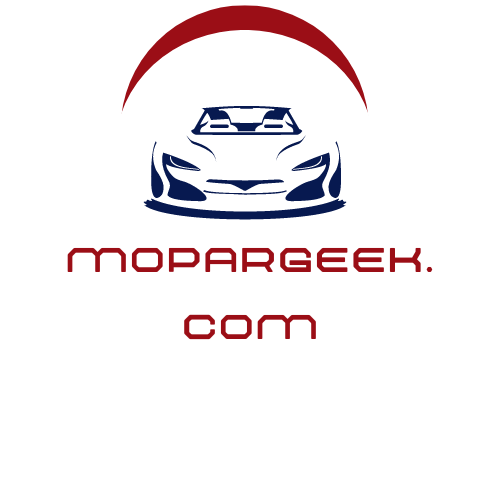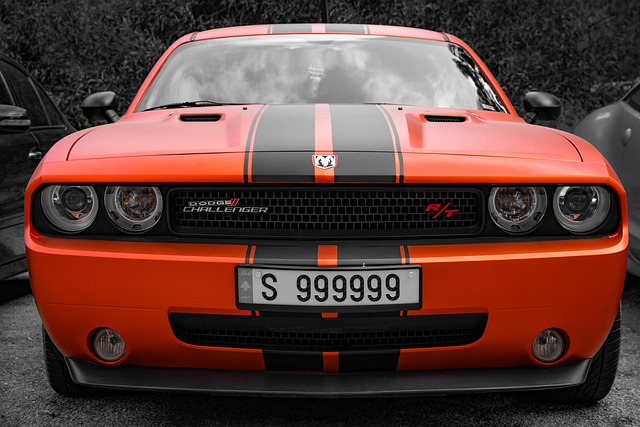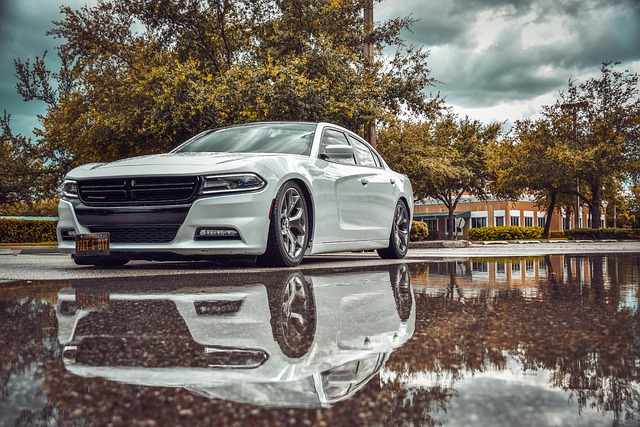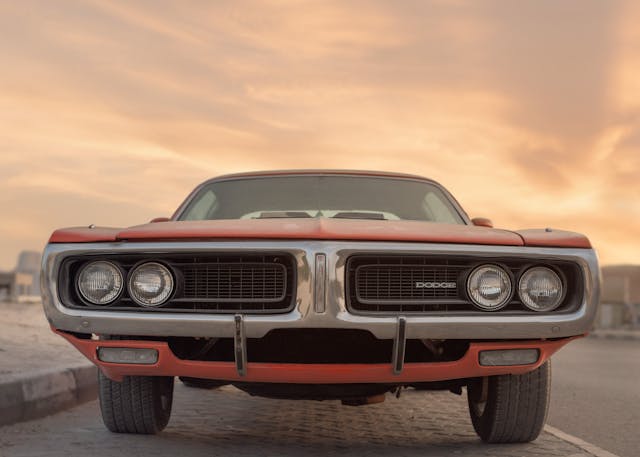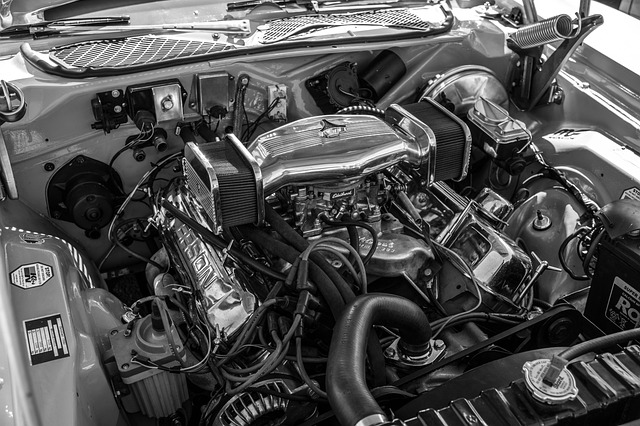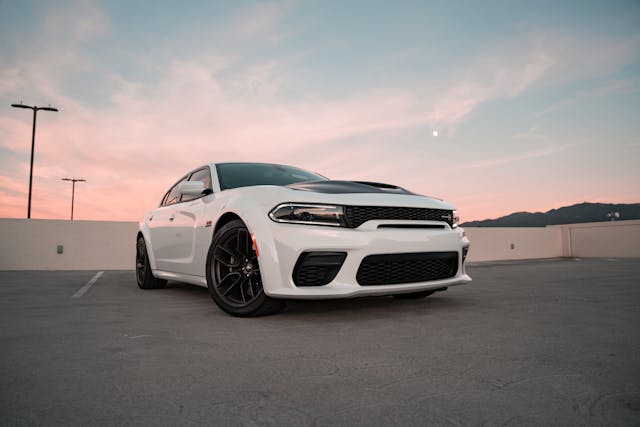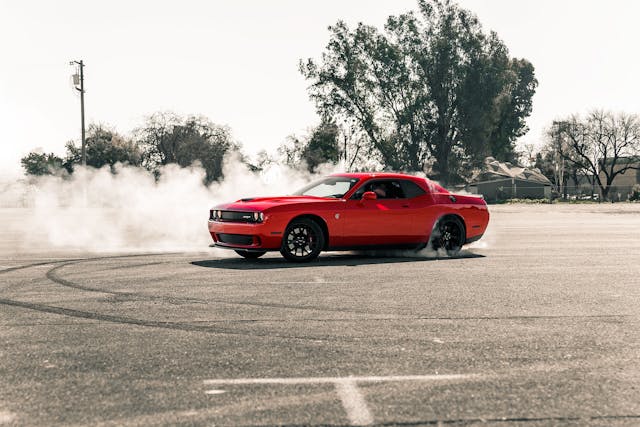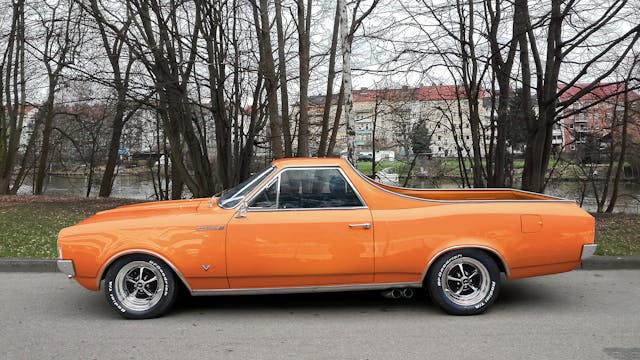What is a Hellcat? The Story of Dodge’s Blue-Collar Supercar
It’s hard to think that the first Hellcat Hemi-powered Dodges hit the road 10 years ago, and now we’re seeing the last Hellcat models being built: the 2024 Dodge Durango Hellcat and the 2024 Ram TRX. A decade ago, Dodge democratized supercar levels of horsepower that were previously reserved for customized exotics in the six-figure range, delivering power to those who could only watch from the sidelines. As a result, interest in the Hellcat is as strong as it has ever been. Dodge ignited the flame and sparked the fire, but before the next chapter of Mopar performance begins, let’s take a look back. Whether you like the Dodgers or not, you can praise them for setting a high standard. Without the Hellcat, there would be no 650-hp ZL1 Camaros, 760-hp GT500 Mustangs, or 720-hp Raptor Rs—and, more significantly, no 800-hp Dodge SRT Banshee Charger BEVs on the way. However, there is still considerable misconception among Hellcat enthusiasts regarding what precisely a Hellcat is. Is that an engine? A coupe? A sedan? A truck? We’ll handle it everything for you right here.

What is a Dodge Hellcat called?
People really do query the internet, “What is a Dodge Hellcat called?” If you have one, it is referred to be “effin’ fast.” If you drive anything else, it’s called “Oh S**t!” But is that actually what people are asking? We believe they are referring to the Hellcat’s taxonomic standing among Mopars. We split it out like this: When the 2015 Hellcat models debuted, everything seemed straightforward. From 2015 to 2017, you could obtain the 707-hp Hellcat Hemi in the Dodge SRT Hellcat Challenger and the Dodge SRT Hellcat Charger, and these were the only Hellcat flavors available until the Hellcat Hemi began appearing in a variety of other cars, not all of which were Dodge! Let’s go over them all…
Types of Hellcats
Without special editions, we have 12 Stellantis car models having some variation of the 6.2-liter SRT Hellcat Hemi V-8 across the Dodge, Jeep, and Ram portfolios. (While Chrysler did not release a Hellcat-equipped variant, some hot rodders have developed one.) All are based on a destroked truck 392 (a BGE-derived 6.4-liter iron truck block with a 4.09-inch bore and a shorter 3.58-inch stroke than the 5.7-liter Hemi). Versions with 702, 707, 710, and 717 hp use a 2.3-liter supercharger (standard Hellcat; 9.5:1 compression, 11.6 psi boost); versions with 797, 807, 808, and 840 hp use a 2.7-liter supercharger (Demon, Redeye, Jailbreak, Super Stock; 9.5:1 compression, 14.5 psi boost); and the 2023 Demon 170 uses a 3.0-liter “Hellephant” supercharger assembly (9.5:1 compression, 21.3 psi boost).
2015–2023 Dodge SRT Hellcat Challenger
The 2015 Dodge SRT Challenger Hellcat was the vehicle that sparked the blue-collar supercar trend. The SRT Hellcat Challenger, which started at $60,990, delivered off-the-charts supercar performance, with a 3.7-second 0-60 time and a quarter-mile pace of 11.7 seconds at 125 mph. The maximum speed was a frightening 199 mph.
The SRT Hellcat Challenger, which was first marketed at 707 horsepower (2015-2018), acquired an additional 10 horsepower (to 717 horsepower) between 2019 and 2023. It came with either an eight-speed automatic or a six-speed manual gearbox and was the only Hellcat variant to have a stick. When the widebody variant debuted in 2018, the SRT Hellcat Challenger was divided into two models: narrowbody and widebody. Both had the identical running gear, with the only notable variations being the bodywork, wheels, steering gear, and tires. (Widebodies employ electric power steering, whereas narrowbodies use traditional rack-and-pinion).
2015–2023 Dodge SRT Hellcat Charger
The SRT Hellcat Charger, which debuted only a few months after the SRT Hellcat Challenger, had a supercharged 707-hp Hellcat Hemi and became one of the world’s fastest four-door production sedans at any price. With an original basic MSRP of $66,990, it was undeniably the most powerful at that time. From 2015 until 2019, the SRT Hellcat Charger was solely offered in narrowbody configuration, but a widebody version became available as an option in 2020. Both narrowbody and widebody SRT Hellcat Chargers were offered in 2020, with the narrowbody model gradually disappearing in 2021. From 2021 until the model’s discontinuation in 2023, the widebody was the sole option for SRT Hellcat Chargers. Engine output was 707 horsepower from 2015 to 2020 and increased to 717 hp in 2021-2023. All model years and variations of the SRT Hellcat Charger have an eight-speed automatic transmission.
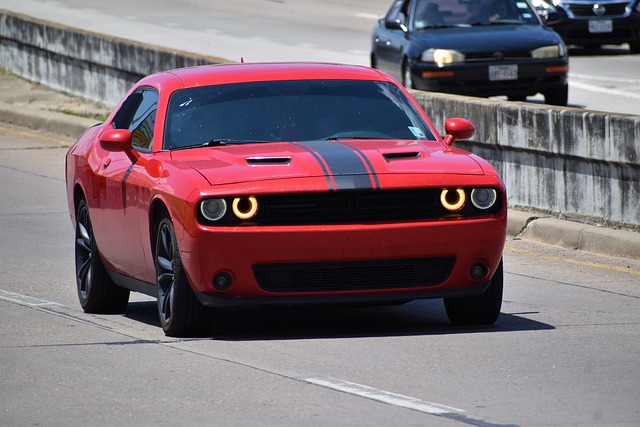
SRT Hellcat Models from 2021 and Up
Due to a California rule that prohibits the use of copper in brake pad compounds for all 2021 model year vehicles, Dodge happily raised the size of the front rotors on most Hellcat Hemi models to maintain the same degree of braking performance. In 2021, the front brake rotor diameter for all SRT Hellcat Charger and Challenger vehicles with 20-inch wheels increased from 390 mm (15.35 inches) to 400 mm (15.75 inches). As a consequence, several websites wrongly report the later vehicles’ front brake rotor size as 390mm. Why does this matter? This may potentially impede the installation of aftermarket wheels on SRT Hellcat models from 2021 forward.
2018 Dodge SRT Demon Challenger.
The 2018 Dodge SRT Demon set a new standard for domestic performance with a claimed 808 horsepower (840 horsepower with 100-octane racing gasoline). For the first time, a manufacturer offered an off-the-shelf production model capable of running sub-10-second quarter-mile times, thanks to standard 315/40R18 Nitto drag radials on 18×11 wheels and a battery of specialized drag tools including line lock, transbrake, race cooldown, drag suspension calibration, power chiller, and a Demon crate with skinny front-runners. What is the starting price for a street-legal coupe capable of running 9-second quarter-miles with a 5-year warranty? A reasonable $86,090. The 2018 Demon was Dodge’s first foray into widebody style throughout the Charger/Challenger family, and it would become available on several of the brand’s passenger-car trim levels. 3,000 2018 Dodge Demons were made for the US market, with 300 built for Canada.
2018–2023 Dodge Widebody SRT Hellcat Challenger
While developing the 2018 Dodge SRT Demon, Dodge correctly predicted that as soon as the Demon was available, customers with more modest means would demand wide bodywork on lower-end models, beginning with the 2018 Widebody SRT Hellcat Challenger (2018 base MSRP, $72,590). Interestingly, SRT Hellcat Challenger widebodies used Redeye 20×11 rolling stock, but only the 2018 model had a single-scoop hood with 707 horsepower; 2019-up SRT Hellcat Widebodies featured a 717-hp engine calibration and a dual-snorkel hood, making it readily confused as a Redeye. (The “red eye” in the fender Hellcat emblem is the sole indicator.) Perhaps the misunderstanding is intentional. Buyers of widebody Hellcats and Redeyes obviously like the uncertainty, which keeps everyone guessing!
2018 Jeep Grand Cherokee Trackhawk.
The Hellcat Hemi V-8 was introduced to Stellantis’ Jeep brand in 2018 for the Jeep Grand Cherokee Trackhawk, a one-year track-spec performance package (base price, $86,995). This mystical Jeep proved brutally swift, with a 3.3-second 0-60 mph time and a quarter-mile pace of 11.7 seconds at 116 mph; with such performance, it’s clear to understand why Stellantis never offered the Hellcat Hemi in the Jeep Wrangler.
(Can you image having 500 pounds lighter and an 8-inch shorter wheelbase?) The 707-hp Hellcat Hemi-powered Jeep Grand Cherokee Trackhawk was not a “Hellcat,” nor was it an SRT vehicle in the traditional sense, but most Mopar aficionados consider the Jeep Trackhawk a Hellcat. Aside from the Hellcat Hemi, the Trackhawk featured a track-centric suspension, large Brembo brakes inside 20×11 wheels, and an eight-speed TorqueFlite automatic gearbox. Only 5,041 Jeep Trackhawks were built, exclusively for the 2018 model year.
2019–2023 Dodge SRT Hellcat Challenger Redeye
Dodge realized fans would want a more road-friendly version of the 2018 Dodge SRT Demon, so they put its powertrain (detuned to 797 horsepower) in the 2019 Dodge SRT Hellcat Challenger Redeye (2019 starting price, $71,350). Instead of 18-inch drag radials and dragstrip equipment, the Redeye would use bigger brakes from the normal Hellcat, a track-biased suspension calibration, and stylish 20×11 wheels wrapped in 305/35ZR20 Pirelli P Zero performance tires.
Dodge projected that the blue-collar supercar would take 3.4 seconds to accelerate from 0 to 60 mph and 10.8 seconds to complete a quarter-mile at 131 mph. The Redeye variant included a redesigned twin-snorkel hood, which visually updated the rest of the SRT Hellcat Challenger series that year. In 2022, the Redeye Hellcat Hemi calibration grew to 807 horsepower (equivalent to the 2020-2023 Super Stock), but only when the “Jailbreak” option was checked. All non-Jailbreak SRT Challenger Redeyes (2019-2023) have a 797-hp engine calibration. The sole visible difference between a 717-hp widebody Hellcat and a 797-hp Redeye Hellcat is the red eye in the Hellcat emblem (inset, above). In 2023, Dodge will sell 300 “Black Ghost” Last Call edition Widebody Redeye Challengers (base price: $99,315). These were in honor of Godfrey Qualls, a renowned Black veteran and Detroit Metro police officer whose “Black Ghost” 1970 Hemi Dodge Challenger RT/SE became well-known as a Detroit street racer.
2020–2023 Dodge SRT Super Stock
The retirement of the drag-spec 2018 Demon opened a need in the Dodge SRT portfolio for a more accessible and inexpensive version of the vehicle, which became the SRT Super Stock (2020 starting price: $81,090). Dodge combined the Demon’s 808-hp Hemi, 18×11-inch wheels and brakes, 315/40R18 Nitto drag radials, widebody kit, and drag-oriented electronic suspension calibration with the hood, suspension hard parts, and fender badges from the widebody Redeye to create the no-frills, street/drag-oriented Super Stock. The Demon’s horsepower was reduced by 1 hp to keep his position at the top of the pecking order. Furthermore, there was no space in the Super Stock for the Demon’s 840-hp racing tune. Over a four-year period, just 1,610 units (from the United States and Canada) were constructed. HOT ROD tested a 2021 model and recorded a 10.41-second quarter-mile time at 123 mph.
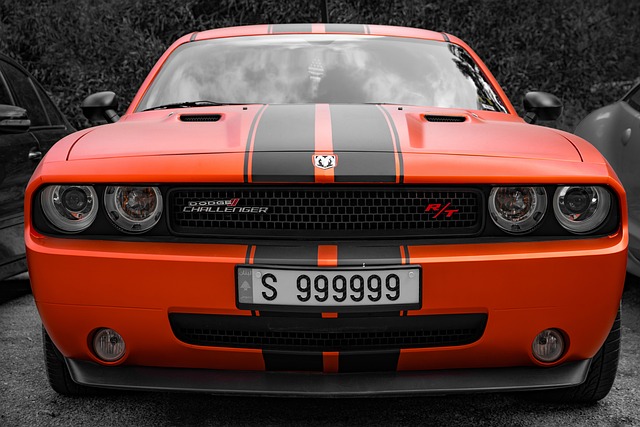
Rarest of the Breed: 2019–2023. Narrowbody SRT Hellcat Challenger Redeye.
While Dodge made minimal commotion when the SRT Super Stock arrived for the 2020 model year, a considerably more frightening ‘cat was quietly unveiled with little fanfare—the narrowbody SRT Hellcat Challenger Redeye. The backstory: Following the Demon’s 2018 debut, buyers flocked to widebody Redeyes, with the take rate approaching 100 percent. A few clever Redeye purchasers, however, chose the thin bodywork, resulting in 797 horsepower (807 hp if they picked the Jailbreak option in 2022-2023) in a vehicle that looked similar to a standard 707-/717-hp Hellcat. Except for the little red eye buried in the Hellcat logo fender emblems, they seem identical. How uncommon are they? Nobody knows for sure, but just 29 narrowbody Jailbreak Redeyes (2023 base price, $84,490) were scheduled for manufacture. Collectors will soon throw their checkbooks at this variety once the concept occurs to them.
